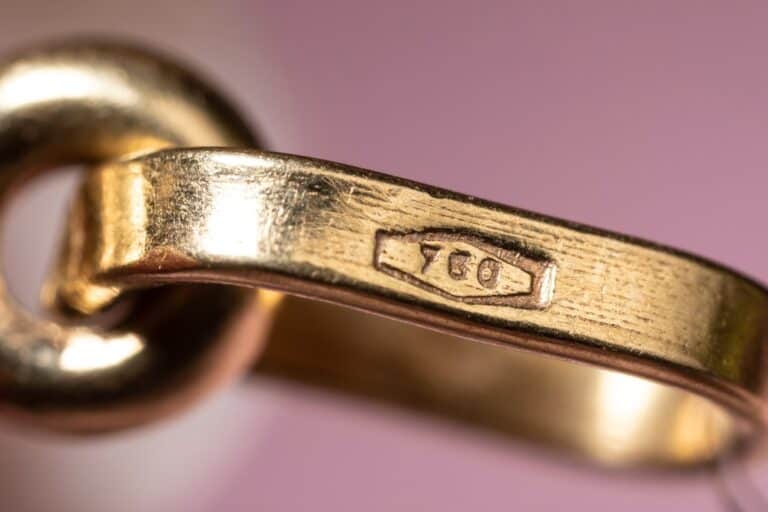Gold bars or ingots, as they are also known, come in two common standards when used in trading: the 400 troy ounce bar and the 32.15 troy ounce bar. There are smaller ones as well, although when you think of gold bricks, the first two are the ones you’re thinking of.
The large gold brick weighs 400 troy ounces which are 438.9 ounces or 12,4 kilograms, while the smaller gold brick weighs 1 kilogram, which is 32.15 troy ounces or 35,27 ounces. Smaller gold bricks can weigh as little as 100 grams or 3,52 ounces, and the smallest one at one troy ounce or 1,09oz.
All these different weights may be a little confusing, so we will look at the differences between them and why there are different sizes and weights of gold bricks, so the next time you are holding one, you’ll know how much it weighs!
What Is A Troy Ounce
The troy ounce is a measure of weight and mass used when weighing and trading precious metals. This weight system dated back to the town of Troyes in France and became the basis of coinage in medieval Britain as introduced by King Henry II.
The US Mint adopted the troy system in 1828 for the American coinage system, which was also applied to measure and weights when it came to the trade of gold, silver, and other precious metals.
The Troy Ounce Vs. Imperial Ounce Vs. Grams
The troy ounce and the Imperial or Averdupois ounce are not the same as the troy ounce is 31,10 grams, while the imperial ounce is 28,35 grams. One Troy ounce is equivalent to 1,09 Imperial ounces.
If you need to convert ounces to troy ounces for trading gold, you will use the following.
For ounces to troy ounces, you need to divide by 1,09; to convert troy ounces to imperial ounces, you would multiply by 1,09. So if you have a gold bar weighing 30 imperial ounces, the same bar would weigh 27,52 troy ounces.
You would only use this measurement of gold weight if you were buying and selling gold or if you were looking to sell gold and wanted to provide potential buyers with accurate weights in both imperial and troy ounces.
What Types Of Gold Bricks Are There
In the world of gold, there are two gold bars, the cast bar and the minted bar. The cast bar has been the standard going back around 6000 years, with the methods used to cast bars remaining much the same.
The Cast Gold Brick
The gold is melted down, impurities removed, then poured into a mold in the traditional brick or bar shape and allowed to cool to form the gold bar. If you visit South Africa, you can witness this being done in front of you at the Gold Mine Museum.
The modern casting method is more precise, especially for bars weighing 1 kilogram or less. The smelter gathers gold pieces of the correct purity and then places them inside a crucible or the desired mold.
This is then placed on a scale until the correct weight is achieved, and the gold is melted down to form the gold brick or whatever the mold shape is. This would be the equivalent of 32,15 troy ounces or 2.2 pounds.
The Minted Gold Brick
If you saw the movie ‘The Italian Job’ with Mark Wahlberg, the central theme is around gold bricks stamped with the imprint of a Balinese dancer. This is an example of minted gold bricks. Minting bricks takes more time and effort but produces a cleaner, shinier gold brick that can be stamped or engraved.
Minted bars start life off as cast bars but are then compressed to form consistent lengths. The gold bricks are then placed in a furnace to increase and improve their malleability – which means they can be shaped as the artisans’ desire.
Once the shape has been formed, these bricks are polished, cleaned, and dried to produce the shimmering finish you commonly see on minted gold bricks.
What Security Features Do Gold Bricks Have
To ensure that all cast or minted gold bricks are legitimate, they will have serial numbers that would be registered by the refinery and accompanied by a certificate of authenticity. Most refineries would stamp their bars regardless of size, and this information is recorded meticulously and is available to verify the gold’s authenticity.
Another measure often used is called a Kinegram, which is a hologram inserted into the packaging of minted bars. Cast bars are generally handled without being packaged, but the Kinebars (as they are known) are packed to prevent tampering or damage during transport or storage.
What Is The Good Delivery Gold Brick
This is the supersize brick and is the one most commonly used by bullion traders and central banks. This brick weighs 400 troy ounces which are 438,9 ounces or 12,4 kg. To qualify as Good Delivery, these must have a gold purity of 99,5%.
Interestingly, the exact gold content is permitted to vary between 350 ozt (troy ounces) to 430 ozt or between 384 oz – 471.8oz. They must be stored in secure and recognized bullion vaults to preserve their Good Delivery status.
These bars will have proper provenance and provide detailed information on their origins, owners and manufacture so that there can be no dispute around the value or gold content required for trade eligibility.
What Is The World’s Largest Gold Brick
The world’s largest gold brick was displayed in the Toi Gold Museum on July 11, 2005. It weighs a staggering 551 pounds or 250kg and measures 17,9″ X 8,9″ x 6,7″. It was made by Mitsubishi Materials Corporation, a subsidiary of Mitsubishi.
At the time of production, the gold content was valued at $3,68 million, and in August of 2022, the brick held a value of more than $16 million!

Conclusion
Aside from their glittering finish on the minted bars or slightly duller one on cast bars, gold bricks are beautiful to behold, and should you get a chance to hold one physically, at least you will have experienced how heavy brick of gold actually is.
If you ever get to handle a gold brick, whether it’s the supersize brick at 400 ozt, the smaller one at 32,1 ozt, or even the smallest one troy ounce bar, you will be properly surprised at its dead weight and density and how slippery they are to hold.






